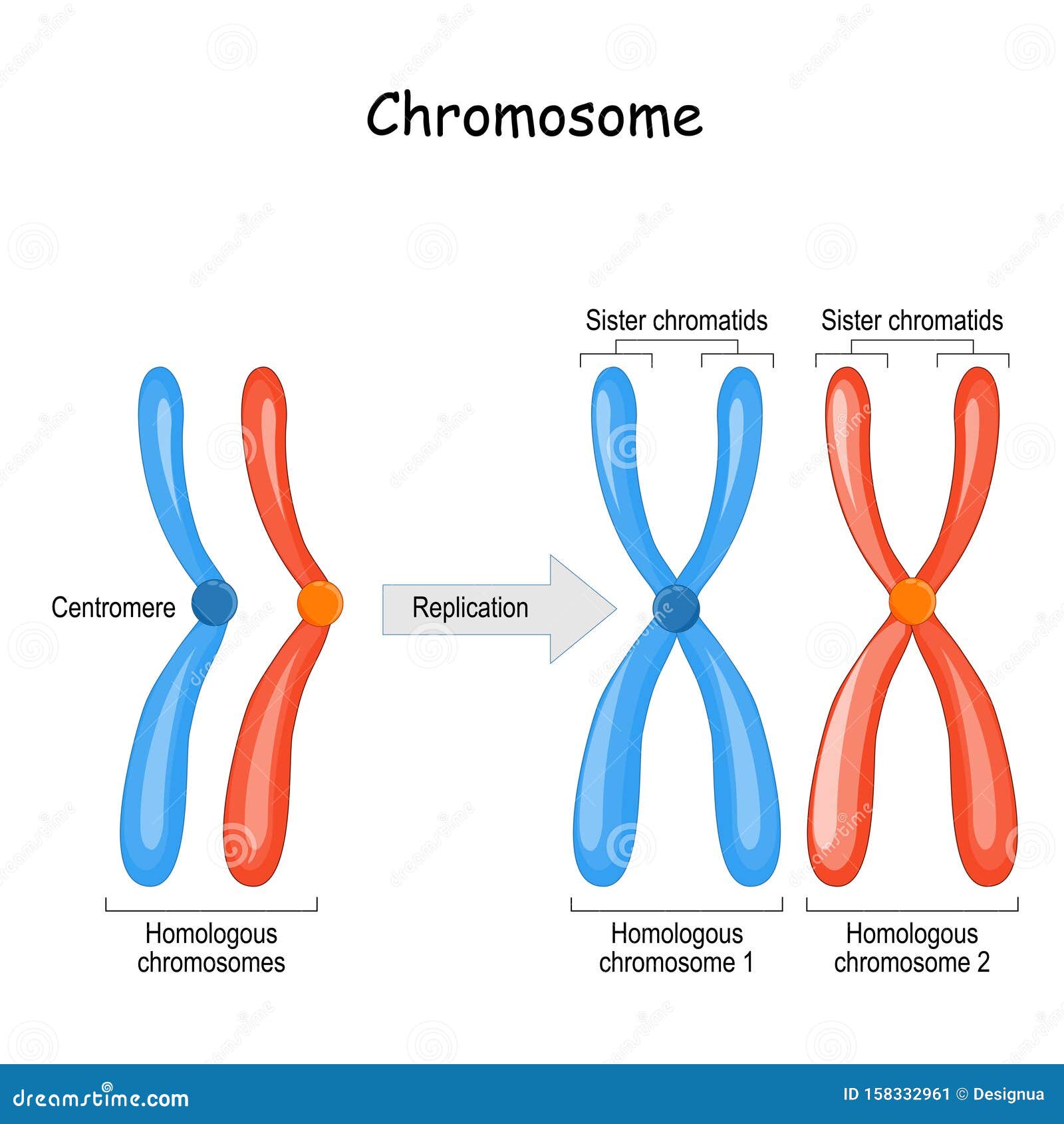
In the enigmatic world of genetics, understanding the nuances between homologous chromosomes and sister chromatids is crucial for comprehending the complexities of cellular division and hereditary transmission. At the heart of genetic variation and inheritance lies the concept of homologous chromosomes—pairs of chromosomes that possess the same genes but may carry different alleles. This article seeks to elucidate the distinction between these two critical structures, thus offering insight into the fundamental principles of genetic diversity.
To begin, homologous chromosomes are defined as pairs of chromosomes, one inherited from each parent, that share the same length, centromere position, and gene loci. Their genetic content—while fundamentally similar in terms of the sequences they encompass—can vary in terms of the specific alleles present on each chromosome. For instance, one homologous chromosome may carry an allele for brown eyes, while its partner carries an allele for blue eyes. This diversity in allele composition among homologous chromosomes is pivotal in the process of meiosis, where genetic material is shuffled, leading to gametes with unique genetic profiles.
During the formation of gametes, homologous chromosomes undergo a process known as synapsis, culminating in the formation of structures called tetrads. This process is particularly fascinating as it facilitates genetic recombination, or crossing over, where portions of chromatids from homologous pairs exchange genetic material. This exchange not only enhances genetic variability among offspring but is also a compelling illustration of nature’s intricate mechanisms to promote diversity.
In juxtaposition to homologous chromosomes are sister chromatids, which are the identical copies of a single chromosome formed during DNA replication. Each chromatid is a mirror image of the other and is connected at a region known as the centromere. It is essential to note that sister chromatids are not involved in the process of genetic variation; rather, they serve to ensure that each daughter cell receives an identical set of chromosomes during mitosis or meiosis II. The disjunction of sister chromatids is a meticulously orchestrated event, crucial for maintaining chromosomal integrity during cellular division.
A graphic representation of these structures illuminates their differences. Homologous chromosomes appear as paired entities, showcasing distinct alleles at corresponding loci, while sister chromatids are visually indistinguishable, mirroring each other and, thus, reflecting uniform genetic information. This visual differentiation invites a deeper appreciation of how organisms maintain a balance between genetic stability and variability.
The fascination with homologous chromosomes is further magnified by their role in inheritance patterns, such as Mendelian genetics. Mendel’s laws of segregation and independent assortment can be traced back to the behavior of homologous chromosomes during meiosis. Mendel’s findings underscore that traits can segregate independently, and this independence is rooted in the genetic diversity provided by homologous pairs. The combinatorial possibilities that arise from these interactions have enduring implications in fields ranging from agriculture to medicine, influencing traits in crops and the prediction of hereditary diseases in humans.
As we delve deeper, the repercussions of errors in the segregation of homologous chromosomes can be profound. When these pairs fail to separate correctly during cell division—a phenomenon known as nondisjunction—it can lead to aneuploidy, which is characterized by an abnormal number of chromosomes in a cell. This condition can result in various genetic disorders, such as Down syndrome, Turner syndrome, and Klinefelter syndrome. The exploration of these anomalies showcases the delicate balance that governs genetic inheritance, reinforcing the importance of proper chromosome pairing and segregation.
Moreover, recent advancements in genomic research have revealed intricate layers of complexity involving homologous chromosomes. Epigenetic modifications, which can alter gene expression without changing the underlying DNA sequence, often take place on homologous chromosomes. These modifications further enhance the variability and adaptability of organisms, highlighting an evolutionary mechanism that enables species to thrive in diverse environments. This layer of regulation adds a compelling dimension to our understanding of genetics, binding the fates of homologous chromosomes to both immediate phenotypic outcomes and long-term evolutionary success.
In conclusion, recognizing the distinction between homologous chromosomes and sister chromatids is not merely an academic exercise; it is foundational to grasping the broader themes of genetics and heredity. These structures are fundamental in the discourse of genetic diversity, inheritance patterns, and the molecular mechanisms that govern life itself. As scientists continue to unravel the intricacies of chromosomal behavior, the implications stretch far beyond the laboratory, influencing fields such as biotechnology, conservation, and understanding human health.
Homologous chromosomes, with their capacity for genetic variation, and sister chromatids, with their role in ensuring identical cellular replication, will continue to inspire inquiry and awe. The allure of these genetic entities mirrors humanity’s enduring quest to comprehend the very fabric of life, yielding insights that reverberate through the annals of biological discovery.
